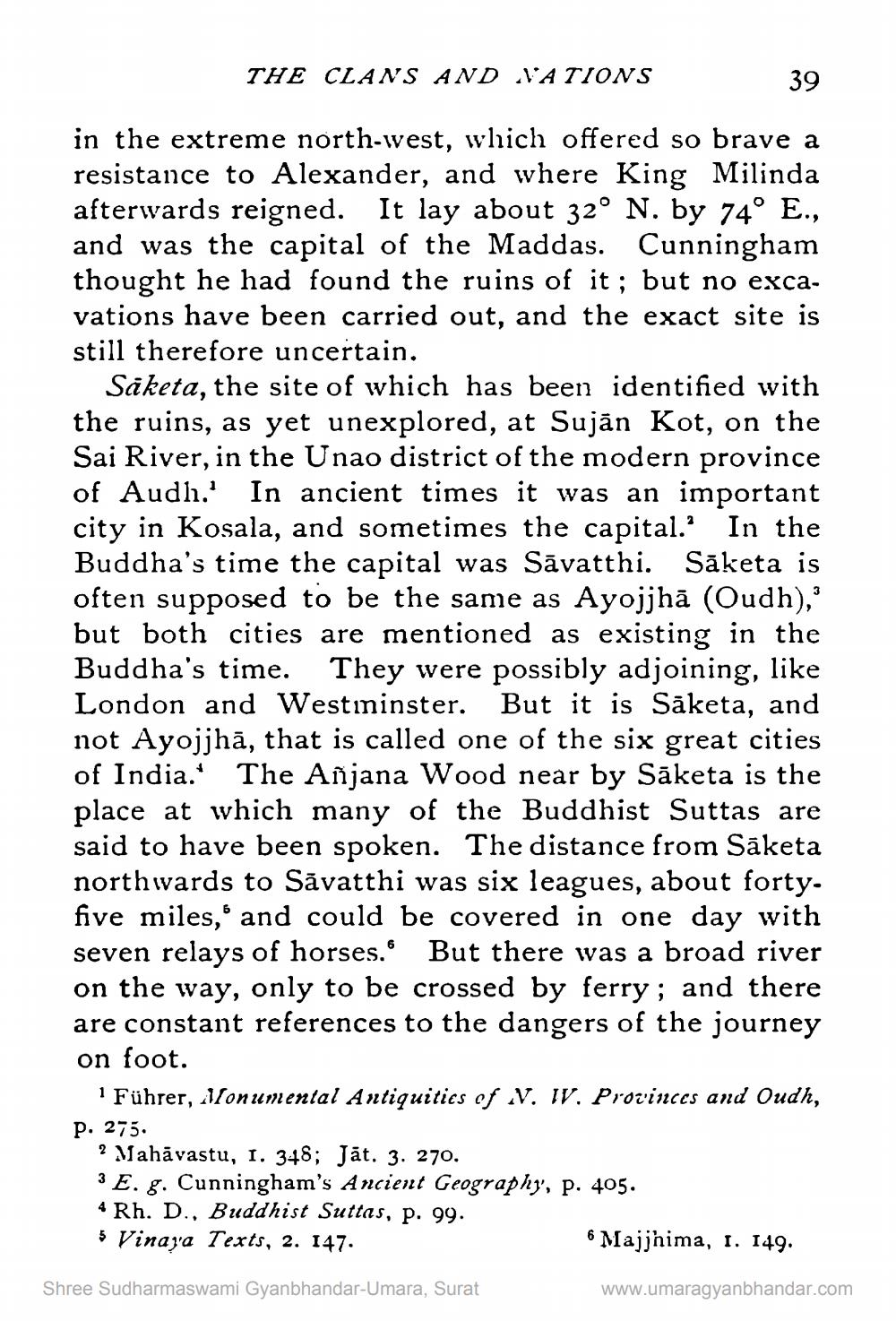________________
THE CLANS AND NATIONS
39
in the extreme north-west, which offered so brave a resistance to Alexander, and where King Milinda afterwards reigned. It lay about 32° N. by 74° E., and was the capital of the Maddas. Cunningham thought he had found the ruins of it; but no excavations have been carried out, and the exact site is still therefore uncertain.
Säketa, the site of which has been identified with the ruins, as yet unexplored, at Sujān Kot, on the Sai River, in the Unao district of the modern province of Audh.' In ancient times it was an important city in Kosala, and sometimes the capital.' In the Buddha's time the capital was Sāvatthi. Sāketa is often supposed to be the same as Ayojjhā (Oudh),' but both cities are mentioned as existing in the Buddha's time. They were possibly adjoining, like London and Westininster. But it is Sāketa, and not Ayojjhā, that is called one of the six great cities of India. The Añjana Wood near by Sāketa is the place at which many of the Buddhist Suttas are said to have been spoken. The distance from Sāketa northwards to Sāvatthi was six leagues, about fortyfive miles,' and could be covered in one day with seven relays of horses. But there was a broad river on the way, only to be crossed by ferry; and there are constant references to the dangers of the journey on foot.
1 Führer, llonumental Antiquitics of V. IV. Provinces and Oudh, p. 275.
? Mahāvastu, 1. 348; Jāt. 3. 270. 3 E. g. Cunningham's Ancient Geography', p. 405. 4 Rh. D., Buddhist Suttas, p. 99. 5 Vinay'a Texts, 2. 147.
6 Majjhima, I. I49.
Shree Sudharmaswami Gyanbhandar-Umara, Surat
www.umaragyanbhandar.com




